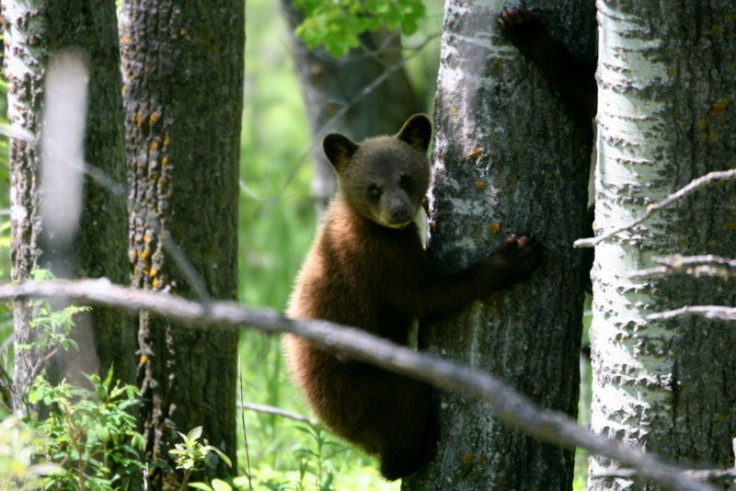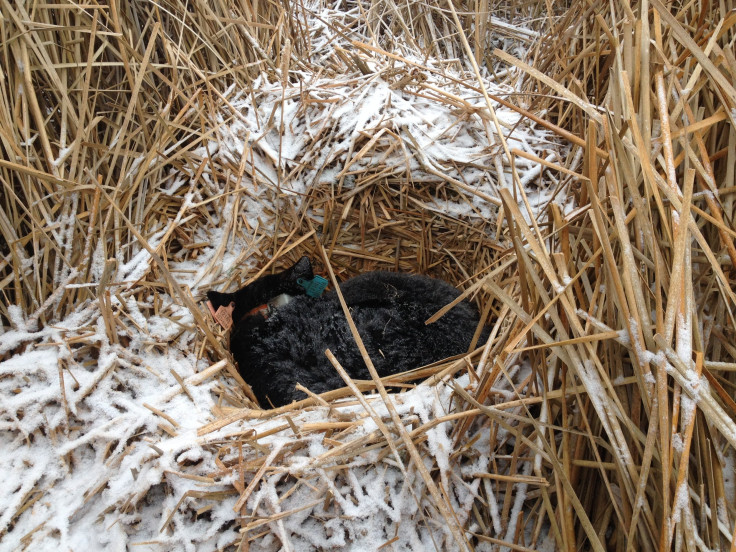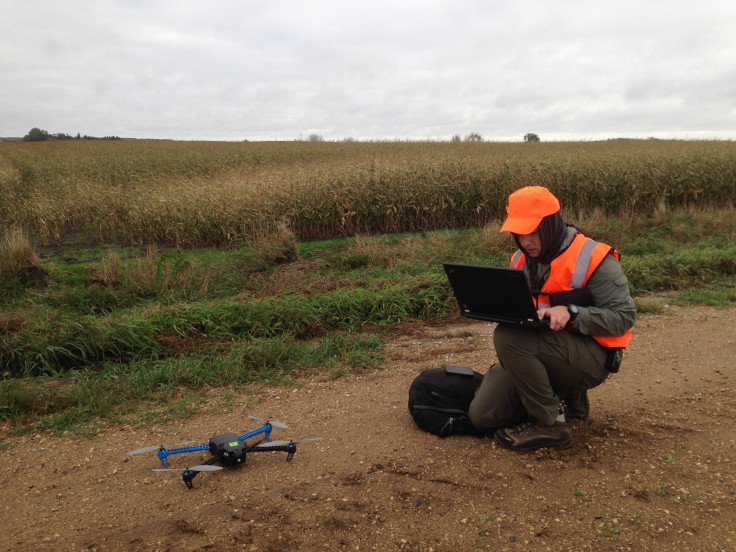Drones Take Flight As Wildlife Research Tools While Conservationists Debate Their Proper Role

Conservation researchers and wildlife biologists are increasingly using drones to save money and improve the accuracy of their fieldwork, flying unmanned aircraft over migrating birds, spying on rhinoceros poachers and photographing forest density. But at least one small study suggests there is a problem: Drones disturb the animals that researchers are trying to protect.
Drones are inexpensive, easy to use and can provide more accurate data in some cases than researchers can get with traditional methods. They are particularly handy for counting the number of animals in a given location and surveying habitat in difficult-to-access areas. Traditionally, researchers hired pilots to maneuver airplanes overhead, or recruited teams of biologists to trudge through the forest in order to complete these tasks.
“It's a game-changer in applications such as orangutan surveys,” says Lian Pin Koh, a conservation ecologist at the University of Adelaide in Australia who has traveled to a dozen countries to train scientists on the use of drones through his nonprofit called ConservationDrones. “Instead of having to send our research assistants to walk the forest for a week counting nests, we can now survey the same area using drones in a matter of hours.”
Leanne Hanson, a biologist at the U.S. Geological Survey's Fort Collins Science Center in Colorado, once used a decommissioned military drone, or unmanned aerial vehicle (UAV), to conduct a population count of sandhill cranes. In less than four hours, her team counted more than 14,000 birds -- a task that would have required at least eight biologists and taken several days to complete.

“I think there's huge potential for the application of UAVs in natural resource management, whether it’s looking at animal populations or assessing habitat from the air,” Hanson says.
But there are also concerns that these low-flying devices might disturb wild animals to a greater degree than biologists or airplanes. The U.S. National Park Service banned the public use of drones from all parklands after a misguided flight broke up a herd of bighorn sheep in Zion National Park.
Now, Mark Ditmer, a conservation biologist at the University of Minnesota, St. Paul, has found that wild black bears are likely startled or stressed by the sight or sound of a drone overhead. He says these results should prompt researchers to study the effect of drones on wildlife in more detail before these devices fall into even more common use.
For his research, Ditmer used GPS to locate four wild black bears in northwest Minnesota that had previously been outfitted with GPS collars and cardiac monitors, which are implants that measure heart rate. He and a small field team hiked to within close range of each bear and launched a small quadcopter made by 3D Robotics overhead.
They piloted the drone to within sight and earshot of the bear, and allowed it to hover in place for several minutes. Overall, the team conducted a total of 17 flights that lasted an average of 5 minutes and 3 seconds.
By examining the data from the cardiac monitors, Ditmer found that the bears’ heart rates spiked in response to every single drone flight. The heart rate of one bear -- a female with cubs nearby -- increased by 123 beats per minute. The heart of a 1-year-old adult male bear beat at a rate that was 47 beats per minute faster than normal when the drone was overhead. Even a hibernating bear was slightly disturbed: Her heart rate raised by 56 beats per minute in the drone’s presence.

On days when wind masked the sound of the approaching drone, the rise in bears’ heart rates was more dramatic -- suggesting that their alarm over the drone was at least partly due to the element of surprise.
Only two studies, including Ditmer’s, have ever focused on the impact that drones have on wildlife. The other study, published earlier this year, concluded that three species of birds were not largely disturbed by drones because they didn’t fly away when a drone hovered near them.
Ditmer also watched the bears’ behavior on a GoPro camera affixed to the drone and tracked their movement after the drone left through GPS. Most bears did not run or walk away. However, the cardiac monitors uncovered a stress response that was previously hidden. His results were published Thursday in Current Biology.
“I think it’s an excellent study,” biologist Hanson at USGS says.
Pin Koh doesn’t think Ditmer’s results should discourage researchers from using drones altogether, but suggests field biologists should establish best practices on the use of drones to minimize their disturbance on animals.
“I don't think the consideration of animals being potentially affected by drones would stop their use by the conservation and research community,” he says. “We just have to develop the standards around using them.”
Ditmer agrees that more research needs to be done, but thinks researchers should minimize their use of drones in the meantime. “We do need to think about potential consequences that we might not be able to see,” he says. “I'd say we definitely should use caution.”

Ditmer also says it’s possible that the effect of drones on bears’ heart rates could diminish over time with regular exposure. Wild bears encounter manmade disturbances every day. Once they learn that these disturbances do not represent a threat, they become acclimated. The bears he studied returned to their original heartrates after a period of between five minutes and 16 minutes after each drone flight.
There are other limits to the use of drones in conservation research including a short battery life and FAA regulations that require researchers to keep the drone within sight at all times. But if conservation researchers and wildlife biologists can overcome just one barrier by agreeing on safe and effective ways to use drones in their research, Hanson says the results could still be transformative.
“I imagine drones to be as common as a pair of binoculars to a field biologist within the next 10 years,” Pin Koh says.
© Copyright IBTimes 2024. All rights reserved.






















